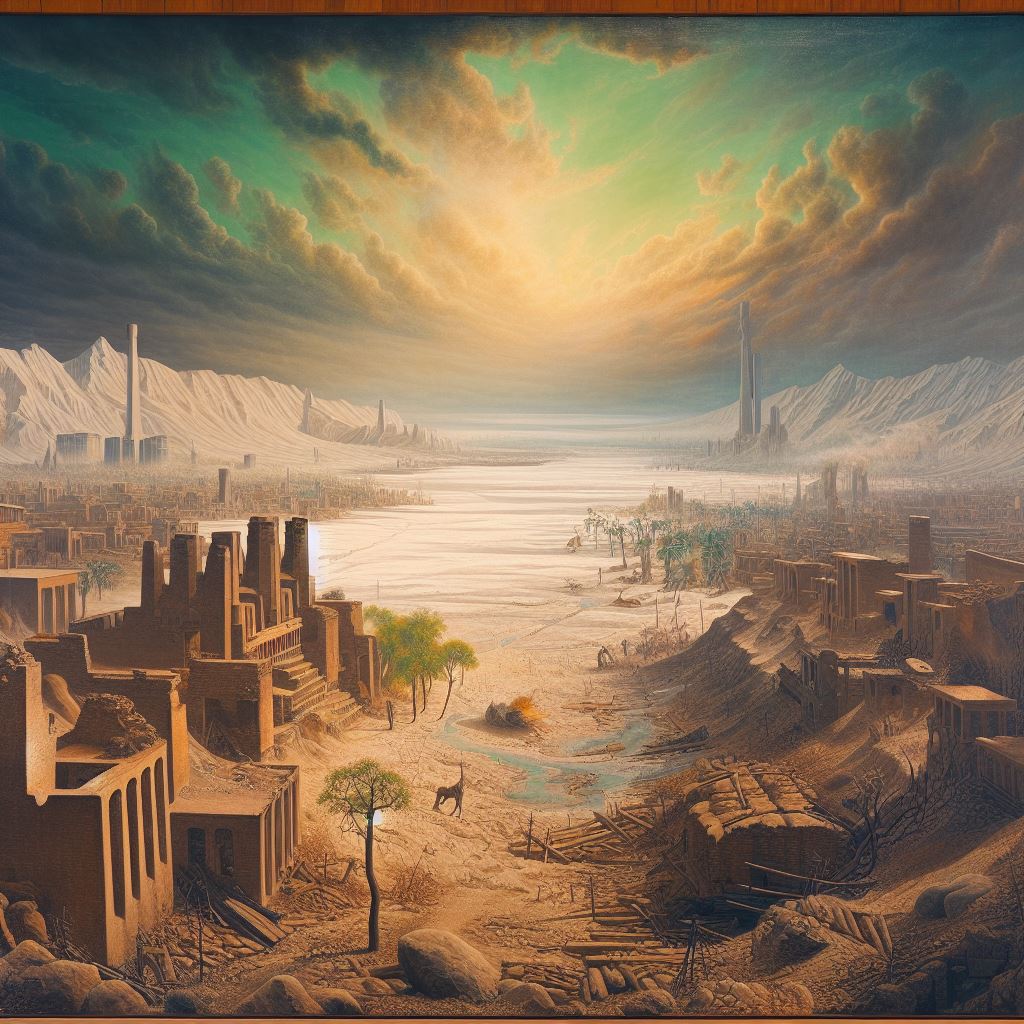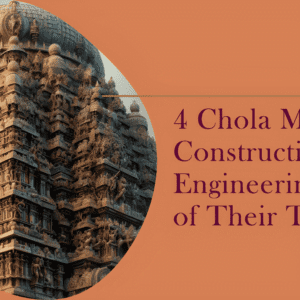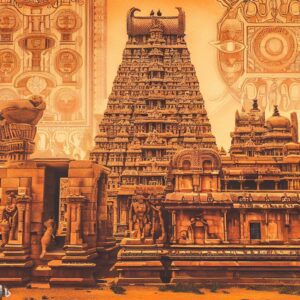The Indus Valley Civilization stands as a testament to the rich tapestry of human history. With origins dating back to around 7000 BC, this ancient civilization flourished in the region that is now part of modern-day India and Pakistan. In this comprehensive article, we will embark on a journey to explore the fascinating history, unique characteristics, and enduring mysteries of the Indus Valley Civilization.
Table of Contents
The Introduction
The history of the Indus Valley Civilization is a remarkable tale of human achievement and societal development. Its roots can be traced back to the early stages of human civilization, a time when the concept of organized societies was taking its first steps.

The earliest evidence of human settlement in the Indus Valley dates back to the Neolithic era, around 7000 BC. During this time, early inhabitants engaged in agriculture, domesticated animals, and established the foundations of an agricultural society. As time progressed, the seeds of civilization were sown, eventually leading to the emergence of one of the world’s earliest and most sophisticated urban cultures.
The Remarkable Cities
The true hallmark of the Indus Valley Civilization lies in its magnificent cities. As this society continued to evolve, it gave rise to a network of urban centres, each with its unique character and significance.

The most iconic of these cities include Harappa and Mohenjodaro, which are considered two of the most significant urban centres of the Indus Valley Civilization. These cities were not mere settlements but bustling metropolises with populations ranging from 40,000 to 50,000 residents. It’s essential to recognize that during this period, such urban concentrations were a rare phenomenon.
Advanced Urban Planning
What truly sets the Indus Valley Civilization apart is its cities’ remarkable urban planning and infrastructure. The layout of these ancient urban centres featured right-angle roads, closed sewer systems, and a level of urban sophistication that was unparalleled in its time.

The grid-like street layouts and the advanced sewage systems are impressive, even by today’s standards. Such urban planning was unprecedented in the ancient world and serves as a testament to the engineering and architectural prowess of this ancient civilization.
The Enigmatic Script
The Indus Valley Civilization left behind a significant enigma that continues to baffle scholars and researchers to this day. This enigma is none other than its mysterious script. The inscriptions found on various artefacts and seals have remained undeciphered, making it one of the great linguistic puzzles of our time.

Despite extensive efforts to decode the script, its meaning remains elusive. The tantalizing symbols etched into seals and tablets have provoked numerous theories and hypotheses, but a definitive understanding of the Indus script continues to elude us.
The Mystery of Equality and Peace
One of the most intriguing aspects of the Indus Valley Civilization is the apparent ethos of equality and peace that seems to have pervaded its society. In a world where hierarchical power structures were the norm, the Indus Valley presents an intriguing departure from convention.
The Argument for Equality
One of the most compelling arguments for equality in the Indus Valley Civilization is the absence of evidence of a ruling class. Unlike many ancient civilizations that boasted grand tombs, palaces, and monuments dedicated to their leaders, the Indus Valley offers no such grandeur.
This absence of ostentatious displays of power raises the question: could the Indus Valley have been a society where individuals were not governed by a centralized authority? Could it have been a place where power was more evenly distributed among its inhabitants?
A Unique Societal Framework
In stark contrast to the hierarchical systems of contemporary civilizations, the Indus Valley Civilization is believed to have operated without a centralized authority. Instead, it is suggested that the society functioned with a form of ‘heterarchy,’ where power was distributed across various councils with distinct responsibilities.
The absence of monumental palaces and the presence of advanced infrastructure, such as bath platforms and standardized housing, in virtually every household, suggests a society marked by a degree of equality.
Evidence of a ‘Heterarchy’
Archaeologists have presented the notion that the Indus Valley Civilization operated on the principles of a ‘heterarchy.’ This term signifies a system where power is not concentrated in a single central authority but is distributed across various decision-making bodies, allowing for collective governance.
The Role of Non-Residential Buildings
The debate over the nature of non-residential buildings in the Indus Valley further fuels the discussion on societal equality. While some argue that these structures were elite residences, others contend that they were public buildings intended for governance and civic interaction. This suggests that the Indus Valley may have had a form of ‘heterarchy’ where decisions were made collectively and not imposed from above.
The Counter-Argument: Was it Truly Equal?
Despite the compelling evidence for equality, some experts remain unconvinced. They posit that the Indus Valley Civilization may not have been as equal as previously thought, pointing to subtle signs of differentiation in aspects like the design of utensils and bangles.
Violence in the Indus Valley?
One of the pivotal debates regarding the Indus Valley Civilization revolves around the question of violence. In a world where many ancient civilizations exhibited clear signs of warfare and aggression, the Indus Valley stands out for its perceived absence of such evidence.
The Argument for Non-Violence
In stark contrast to the sculptures and inscriptions of violence and warfare found in Mesopotamia and ancient Egypt, the Indus Valley lacks such representations. In these other civilizations, images of soldiers beheading enemies and brutal conflict were pervasive in their art and writings.
However, in the Indus Valley, these signs of warfare are conspicuously absent. John Marshall, an archaeologist, observed in 1931 that the scarcity of weaponry and the apparent lack of fortifications at Mohenjodaro indicated a society that was neither aggressive nor preoccupied with the fear of invasion.
Another researcher, 60 years later, noted that the weapons found in the Indus Valley were of a basic design. While some sceptics argue that these may not have been weapons at all, Edward Cork countered that the weapons in the Egyptian civilization were equally basic, yet they are indisputably recognized as weapons.
The weapons found in the Indus Valley were rudimentary, lacking a critical component known as the midrib, a structural feature that lends strength to a sword. Some archaeologists have speculated that these objects may not have been weapons but rather tools used for other purposes, such as agriculture.
This leads to the conclusion that the absence of complex weaponry in the Indus Valley could indeed signify a less violent society. The society may have thrived without the need for the advanced weaponry found in other contemporaneous civilizations.
The Counter-Argument: Was Violence Concealed?
While the evidence for a peaceful Indus Valley is compelling, some scholars raise counter-arguments. They suggest that while there may have been no external warfare, it is essential to consider the potential presence of internal policing.
The Counter-Argument: Policing for Peace
It is suggested that any society, even one marked by apparent equality and peace, would require a mechanism to maintain order and security. The proponents of this view argue that the absence of external threats does not necessarily imply a complete lack of violence.
For instance, some argue that a form of internal policing or a system of law enforcement might have existed to keep the peace within the society. In this perspective, peace was maintained not through the threat of external warfare but through internal mechanisms.
Scholars cite the absence of evidence of external enemies in the region surrounding the Indus Valley as a potential reason for not needing a formidable army. The presence of natural barriers, such as mountains to the west, may have rendered external conflict less likely.
A Complex Enigma
The debate surrounding the nature of the Indus Valley Civilization remains a complex and multi-faceted topic. The evidence is far from conclusive, and the civilization continues to be a subject of extensive research and scrutiny.
In summary, the Indus Valley Civilization presents three primary possibilities:
1. Complete Equality: The Indus Valley Civilization was marked by violence and inequality similar to many other civilizations of its time, but the evidence to support this claim remains elusive.
2. Partial Equality and Peace: While there may have been some degree of violence and inequality, it appears to have been considerably less prevalent in the Indus Valley compared to other contemporary societies.
3. Exceptional Equality and Peace: The Indus Valley Civilization represents a unique civilization characterized by a remarkable degree of equality and non-violence.
The mystery of the Indus Valley Civilization endures, and researchers continue to uncover new clues and perspectives on this ancient enigma.
The Legacy of the Indus Valley Civilization
The Indus Valley Civilization, with all its mysteries and debates, left a profound legacy that continues to influence the modern world. While much remains uncertain, there are aspects of this ancient society that have had a lasting impact.

1. Urban Planning and Infrastructure: The advanced urban planning, with its grid-like streets and enclosed sewer systems, offers valuable insights for contemporary city planners. The Indus Valley’s emphasis on sanitation and civic amenities demonstrates an understanding of the importance of organized urban development.
2. Equality and Governance: The debate surrounding the Indus Valley’s degree of equality and potential heterarchical governance structures has implications for modern societies. It challenges our notions of hierarchical power and provides an example of an alternative model for decision-making and societal organization.

3. Script and Language: The enduring enigma of the Indus script serves as a testament to the complexity of language and writing systems. The quest to decipher this ancient script continues, offering insights into linguistic evolution and the challenges of decoding ancient texts.

4. Trade and Commerce: The Indus Valley’s extensive trade networks, including connections with Mesopotamia and Egypt, highlight the importance of commerce in ancient civilizations. The seals and artefacts found in these regions suggest a thriving trade network that helped connect distant societies.

5. The Quest for Equality: The idea of a society that strived for equality, as suggested by some interpretations of the Indus Valley, remains a compelling ideal. It serves as a reminder of the enduring human pursuit of fairness and social justice.
The Ongoing Exploration
The exploration of the Indus Valley Civilization is an ongoing journey, marked by unceasing curiosity and discovery. Archaeologists, historians, and researchers continue to unearth new artefacts, reevaluate existing evidence, and challenge established narratives.

As the tools of analysis and interpretation advance, the enigmas of the Indus Valley may gradually yield their secrets. Linguists and epigraphists persist in their efforts to decode the ancient script, while scholars reexamine the societal structure and potential evidence of violence in this ancient society.
The very nature of historical research is dynamic and ever-evolving. Each revelation and reinterpretation brings us closer to understanding the Indus Valley Civilization, but the pursuit of knowledge in this field is far from over.
The Unfinished Story
The story of the Indus Valley Civilization remains unfinished, with more chapters yet to be written. The ancient script may one day yield its secrets, offering insights into the language and communication of this enigmatic society. New archaeological discoveries may shed light on aspects of governance and social structure.

It is through the continued dedication of researchers and the relentless pursuit of knowledge that we inch closer to unravelling the mysteries of the past. The Indus Valley Civilization is a testament to the enduring allure of history and the ever-enticing quest to understand our shared human heritage.
Conclusion
The Indus Valley Civilization is an extraordinary testament to the complexity of ancient societies. Its enduring mysteries, including the enigmatic script, the debate over equality and violence, and its advanced urban planning, continue to captivate the imagination of historians and archaeologists.

As we delve deeper into the annals of history and continue to excavate and decipher the remnants of this ancient civilization, we will likely unlock more of its secrets. The Indus Valley Civilization challenges our understanding of the past and offers an intriguing glimpse into a society that stood apart from its contemporaries.
This journey through the phases of the Indus Valley Civilization serves as a reminder that history is not a static narrative but a dynamic and ever-evolving exploration of human achievements and mysteries. The questions raised by the Indus Valley may take years, even decades, to answer fully, but the quest for understanding continues.
Frequently Asked Questions (FAQs)
1. What is the Indus Valley Civilization?
The Indus Valley Civilization, also known as the Harappan Civilization, was an ancient civilization that existed around 2500-1900 BCE in the northwestern regions of South Asia, primarily in what is now Pakistan and northwest India. It was one of the world’s earliest urban civilisations, known for its advanced urban planning and trade networks.
2. What is the significance of the Indus Valley Civilization?
The Indus Valley Civilization is significant for several reasons. It represents one of the world’s earliest urban civilizations, demonstrating advanced city planning with grid-like streets, a sewage system, and well-constructed buildings. It also had a complex trade network, indicating a highly organized society. The civilization’s legacy includes its enigmatic script, challenging researchers to decipher it.
3. Why is the Indus script undeciphered?
The Indus script remains undeciphered due to the lack of a bilingual inscription that could provide a key to understanding the script’s symbols. Deciphering an ancient script is a complex task, requiring both a significant corpus of text and some context or understanding of the language. Despite ongoing efforts, the script’s meaning remains a mystery.
4. Was the Indus Valley Civilization a peaceful society?
There is an ongoing debate about the nature of the Indus Valley Civilization. Some evidence suggests it may have been more peaceful and egalitarian than other ancient societies, with a lack of representations of warfare in its art. However, other scholars argue that there may have been violence within the society, even without external threats.
5. What are some of the enduring mysteries of the Indus Valley Civilization?
The Indus Valley Civilization is known for its many mysteries, including the undeciphered script, the nature of its social structure and governance, the reasons for its decline, and the extent of its trade networks. These mysteries continue to fascinate and challenge researchers.
6. How does the Indus Valley Civilization influence modern urban planning?
The Indus Valley Civilization offers valuable lessons in urban planning, with its well-organized cities featuring grid-like streets and advanced sewage systems. These principles continue to influence modern city planning by emphasizing the importance of sanitation and civic amenities.
7. What evidence suggests that the Indus Valley Civilization may have been more egalitarian?
Some evidence for greater equality in the Indus Valley Civilization includes the uniform size of many houses, the presence of public buildings that may have been accessible to all citizens, and the absence of strong evidence for a ruling class. However, these interpretations are still the subject of scholarly debate.
8. What was the economic structure of the Indus Valley Civilization?
The economy of the Indus Valley Civilization was primarily based on agriculture, with well-irrigated fields. Additionally, the civilization was known for its trade networks, with evidence of connections to Mesopotamia and Egypt, where they exchanged various goods, including luxury items and materials like copper and gold.
9. How long did the Indus Valley Civilization exist?
The Indus Valley Civilization is believed to have thrived from around 2500 BCE to 1900 BCE, making it one of the world’s earliest urban civilizations. Its exact duration is still a subject of ongoing research and debate among archaeologists and historians.
10. What are some key sites of the Indus Valley Civilization?
Some of the key sites of the Indus Valley Civilization include Mohenjodaro and Harappa, which are among the most famous and well-preserved cities. Other significant sites include Rakhigarhi, Dholavira, and Lothal, which have contributed to our understanding of this ancient civilization.



